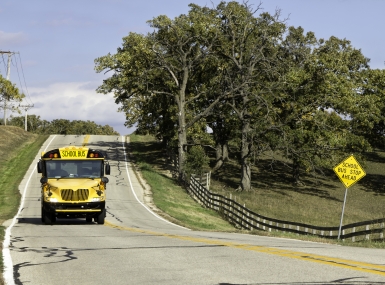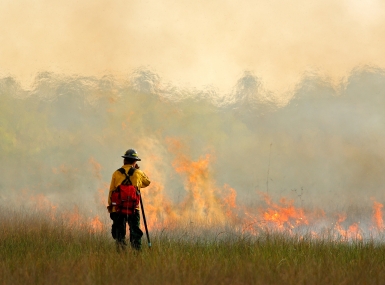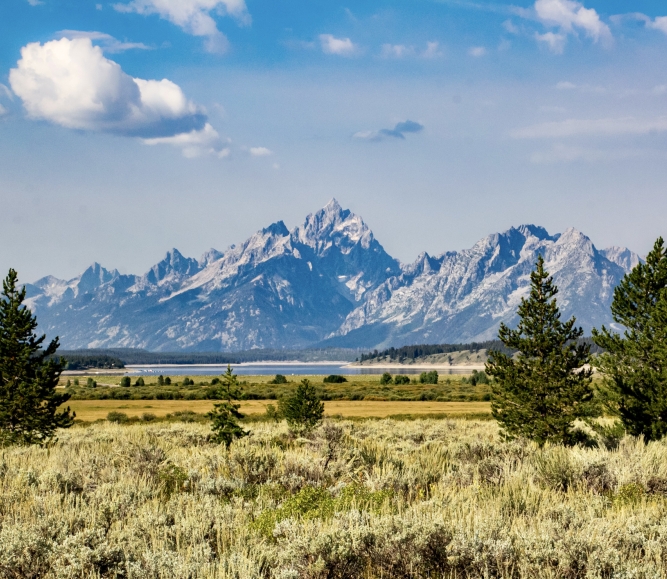Public lands challenges are as varied as their counties
Key Takeaways
The experience of managing their way through public lands challenges has given some Western county officials insights into how they can better play the hands they’ve been dealt and how to improve partnerships with the federal government.
In each case, the presence of public lands — whether national parks, national forests or Bureau of Land Management areas — draws visitors, which can buoy a local economy, but the diffusion of responsibility often leaves counties without a hand on the wheel.
In Nevada County, Calif., slices of different forested land around the Yuba River, controlled by different federal, state and private entities, have effectively left the county without any authority.
“There’s no county land there, but people use county roads to get there and they stay in our hotels and restaurants and they park along our roads and make it hard to get in for Search and Rescue and there aren’t really any toilets,” said Nevada County Supervisor Heidi Hall. “We realized early on without having land there or really any authority, the best thing we could do is to be a convener and to try to help secure funds for things.”
For six years, the county has been convening a group that includes the Bureau of Land Management, U.S. Forest Service, the state park system, the sheriff’s office, various fire agencies and local nonprofits related to the river. The group addresses fire danger, pet and human waste, safety issues and more, in hopes of coordinating a response to improve conditions. That’s meant fundraising for chemical toilets, organizing river ambassadors and supplying life vests. And Hall eyes a more formal composition.
“My goal had been for $10,000 here and $10,000 there,” she said. “We’ve managed to do a whole lot to help with the safety for people and to keep the beauty of the river alive but it’s not nearly enough. We’ve decided to put this in our master rec plan so that we can really go for the big bucks…go for those million dollar grants.”
Meanwhile, Hawai’i County, Hawai’i added a 2% property tax to create an open space fund, with finances to purchase open space adjacent to national parks and to fund stewardship efforts.
“What we’ve done with our stewardship program is incentivize our stewards to take and honor those properties and use cultural incentives to redevelop those areas to be held in perpetuity in open space,” said Councilmember Sue Lee Loy.
For Washington County, Utah Commissioner Adam Snow, the fact remains that not only is the Payments in Lieu of Taxes (PILT) program unreliable, it’s often inadequate for the services counties provide on federal lands.
“It’s hard to provide the resources for our children, our schools, our teachers — all of the things that all counties and municipalities are trying to afford when you don’t have the funding to do so,” he said.
Although Utah’s counties have all passed resource management plans, they remain at the mercy of shifting federal priorities that have turned what had been consistent policy into a series of sprints and stops with the change in administrations.
“The problem with resource management planning is that it has become so political that it’s impossible to plan — you can’t plan more than four years out,” he said. “When a national monument is designated until … the planning process takes about four years. Then a new president comes in and completely changes it. This ping-pong ball of land management is bad for the natural resource, it’s bad for an economy and it’s unsustainable, because by the time you rewrite it for your new boss, your boss has changed again and it will happen again,” noting that even consecutive administrations with similar ideologies will vary.
“It’s a short-term win, long-term loss and if you actually care about the natural resource, it is a bad way to manage the land.”
Related News

Secure Rural Schools Reauthorization Act of 2025 signed into law in victory for counties
On December 18, 2025, President Trump signed the Secure Rural Schools Reauthorization Act of 2025 (P.L. 119-58) into law. The reauthorization of the SRS program is a major victory for counties and ensures that timber-dependent counties will receive critical funding to maintain essential local government services such as public education and transportation infrastructure.

DOI announces creation of new U.S. Wildland Fire Service
On September 15, the U.S. Departments of the Interior (DOI) and Agriculture (USDA) announced major joint directives to change how the agencies will coordinate and provide wildfire response, including the creation of a new U.S. Wildland Fire Service within Interior.

U.S. House of Representatives passes SPEED Act and other permitting reform bills
On December 18, the U.S. House of Representatives passed the SPEED Act (H.R. 4776). The SPEED Act would strengthen county involvement in decision-making and make needed commonsense reforms to the federal environmental review process.
Featured Initiative
National Center for Public Lands Counties
The NACo Center for Public Lands Counties is dedicated to advancing the policy and practice study of America’s public lands counties. Our mission is to deepen the understanding and address the unique challenges faced by counties containing federal lands through strategic research and collaboration.

